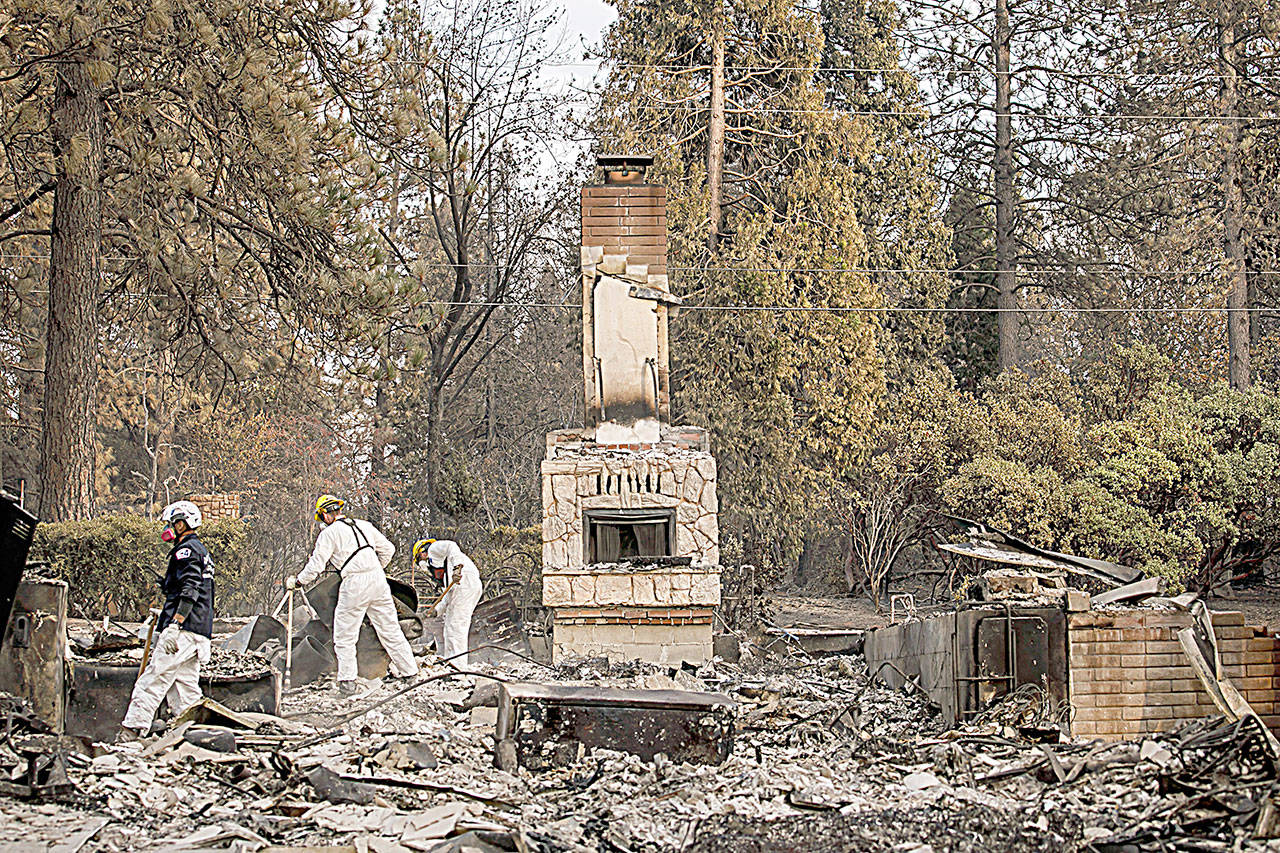SACRAMENTO, Calif. — Disaster officials say they need to start removing millions of tons of rubble from Paradise — and soon — so the town can begin recovering from the Camp fire.
That much is certain. The question is where to put the rubble.
For the second time in two weeks, FEMA and state officials have run into local opposition over plans to open a large but temporary scrapyard to sort and process truckloads of concrete and metal rubble from burned-out Paradise.
First it was Chico, where townspeople and elected officials persuaded the government to abandon a 100-acre site next to a residential neighborhood.
Now it’s Oroville, where residents are speaking in opposition to the government’s second choice: a former Superfund site near Highway 70 on the south side of town. Although the decision is out of Oroville officials’ hands, about 100 residents showed up for a town hall meeting last week to protest the location, largely over their fears that the project would stir up toxic chemicals still in the soil. Federal officials say the site is safe.
Kelly Huston of the California Office of Emergency Services, which is working with federal agencies on the project, said “we’re still continuing to pursue that site” but officials are listening to residents’ concerns.
City Councilwoman Linda Draper called it a “public safety and public health risk.”
“We’re concerned about anything that stirs up the soil around there,” she said.
As for what would get trucked into Oroville, “it’s really more similar to the debris from 9/11,” she said. “This is toxic-laden stuff.”
State and federal officials insist, however, that the debris from Paradise would be cleansed of hazardous materials long before reaching Oroville.
The controversies in Oroville and Chico underscore some of the logistical difficulties of making a quick recovery from a disaster like the Camp fire. The Nov. 8 fire killed 86 people, the most in California history.
The entire town of Paradise (pop. 27,000) has been evacuated, and in many respects the clock is ticking. State and federal officials want to begin removing the concrete and metal debris from Paradise by mid-January — a timetable that’s looking increasingly difficult to achieve. Besides dealing with residents’ concerns, Huston said officials also have to extend the rail spur that serves the Oroville site and finalize various details.
“Ultimately our urgency is related to trying to help the people of Paradise,” he said Monday. “Getting the debris out of there is the biggest roadblock, literally and figuratively.”
With the debris gone, residents could move travel trailers onto their properties and resume living there, he said.
“We knew from the beginning that we’d have to consider many different sites,” he added. “We haven’t put all our eggs in one basket. There’s no perfect site.”
Oroville already has played a role in Paradise’s recovery — mainly by providing temporary homes to thousands of evacuees. Although the formal shelters have closed, many Paradise residents are staying in hotels, or with friends and relatives in Oroville.
“The whole town is packed,” said Mayor-elect Chuck Reynolds.
The Oroville location would be used to process up to 4 million tons of concrete and metal, rinsed clean of hazardous materials before leaving Paradise by truck. Once the debris arrives, it will be sorted, crushed and shipped elsewhere by rail. The yard would be open for at least a year.
The site is zoned for industrial use and the nearest home is 2,500 feet away, according to an environmental assessment prepared by the U.S. Army Corps of Engineers. Declared a Superfund site in 1984 by the U.S. Environmental Protection Agency, the location has undergone years of cleanup of dangerous chemicals that contaminated the soil and groundwater. EPA officials consider the site clean.
The history of the location is weighing heavily on many residents, however.
The site, on Baggett-Marysville Road, belonged to a company called Koppers, which treated railroad ties, telephone poles and other wood products with chemical preservatives made of dangerous chemicals such as copper and arsenic.
Reopening the site to industrial activity would be “like a scab being ripped off,” Oroville resident Jesse Hollis said at the community meeting. Hollis said his father died of pancreatic cancer from working at Koppers, according to a report in the Oroville Mercury-Register.
Reynolds said federal and state officials made clear that they will use the Koppers site if they decide it’s the best option. “They weren’t looking for permission,” he said.
The incoming mayor said he’s comfortable with reopening the Koppers site to FEMA but understands why many residents are afraid.
“A lot of people have emotional ties to that property because they lost people to cancer,” said Reynolds.
His uncle died of cancer after working on the site for many years. The site “is fine now, but there’s still a lot of emotional ties,” he said.
Reynolds said the site could create jobs in Oroville, and he believes Oroville has responsibility to help Paradise recover.
“This has to be done, they have to do it somewhere,” Reynolds said. “We need to help our neighbors, especially in the face of tragedy.”


